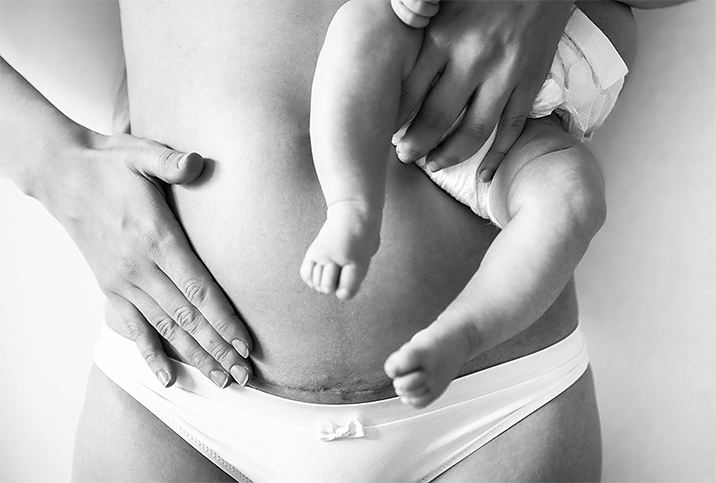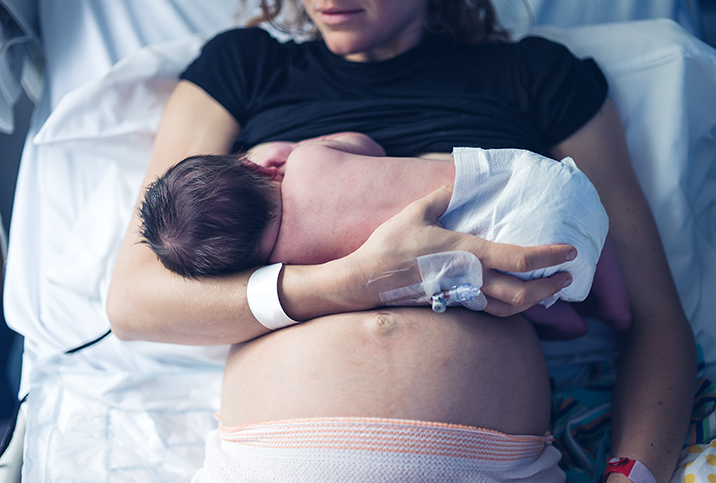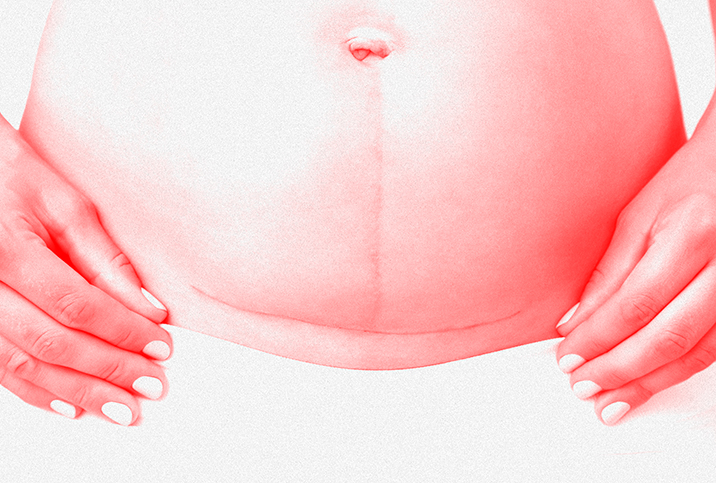Induced Labor Likely Reduces Risk of C-Section

Labor is an overwhelming process for both mothers and newborns, and with the constant array of new information being released, it's difficult to know what you should and shouldn't do when the time comes.
It was previously thought that inducing labor could lead to negative health outcomes for both mother and baby. However, a 2018 clinical trial published in the New England Journal of Medicine found low-risk women who elect to induce at 39 weeks have a reduced likelihood of cesarean section, spend fewer days in the hospital and are less likely to experience preeclampsia.
Understanding how induction works
If your pregnancy lasts one week past your due date (41-plus weeks pregnant), you often are recommended for a medical induction. You can also elect to induce after 39 weeks. This option is attractive for people who want to plan around childcare arrangements for older siblings, work events or military deployment, or who live far from a hospital.
The membrane sweep
Before induction, your medical team may offer you a membrane sweep, which functions as a nudge to get labor started. It may work, it may not, but it's sometimes an option to try if you're ready to have your baby. Once you're sufficiently dilated, your clinician inserts a gloved finger into the cervix and manually separates the amniotic sac from the uterus in the area around the cervix using a sweeping motion.
This action encourages your body to release prostaglandins, which help soften the cervix and may stimulate uterine contractions.
Cervical ripening
Before induction begins, your doctor assesses your cervix. Throughout most of a normal pregnancy, the cervix is firm, thick and closed tight. For a cervix to be favorable for vaginal delivery, it needs to soften, thin out and dilate—a process called cervical ripening. Based on data from trials of labor induction, approximately 83 percent to 85 percent of women with an indication for induction require cervical ripening.
Cervical ripening, if needed, can be achieved through mechanical means, such as dilators or balloon catheters, or pharmacologically with prostaglandins which have a variety of administrative routes, including vaginal inserts. Cervical ripening can be done in an inpatient or outpatient setting. The process of cervical ripening can also start uterine contractions. If it does not, or if your cervix is already favorable, then IV-administered oxytocin can be used to start or strengthen uterine contractions.
If labor takes too long to begin, your doctor may perform an amniotomy, a procedure used to manually break open the amniotic sac. An amniotomy can help start labor but comes with the risk of infection and cord prolapse.
Induction is usually offered if you're overdue, your water breaks and labor fails to progress on its own, or you or your baby have health issues.
The pros of induction
It was previously thought that inducing labor increased the likelihood of a C-section, but the aforementioned 2018 study suggested that induction actually decreases this risk.
In a 2018 interview with NPR, William A. Grobman, M.D., lead author of the study and professor of obstetrics at Northwestern University Feinberg School of Medicine in Chicago, said reducing the rate of C-sections in the United States is an important goal and even a small percentage drop in the rate can have benefits overall.
The study also found women were less likely to develop preeclampsia, a dangerous pregnancy disorder in which blood pressure rises significantly. Additionally, studies show there are fewer infant deaths during induced labor compared to spontaneous birth. Babies who experience induced labor are usually born with better Apgar scores, indicating greater overall health at the time of birth.
"It is imperative to take into account all the information," advised Kate Mundell, N.M.C., a midwife with Naytal, a London-based online clinic for women.
"There is not a standard prescription for all pregnant women, and all the benefits and disadvantages need to be looked at carefully for each individual case," Mundell said. "Induction of labor definitely has its place and can be useful when health issues arise, but I believe that any medical intervention should always be seriously considered first and not taken too lightly."
The cons of induction
The research is encouraging, but as with any medical procedure, induced labor has its disadvantages.
For example, numerous studies suggest that induced labor leads to more vaginal births involving forceps or vacuum extraction. The labor process is also more likely to take longer with induced labor as opposed to spontaneous birth. And though induced labor reduces the likelihood of needing a cesarean section, there is still a chance it may be needed if complications occur or the labor is taking too long.
Other risks of induced labor include:
- The baby having a slower heart rate
- Uterine rupture in the mother
- Infections in both the mother and the newborn
- Excessive vaginal bleeding in the mother
- Issues involving the umbilical cord
- More painful contractions during the labor process
Induction of labor is a common intervention, and though the incidence of C-section is reduced, 15 percent of induced women need further intervention, such as instrumental delivery, according to Piroska Cavell, N.M.C., R.C.N., midwife and medical director at Clinic Sese, a private well-being clinic in Kent, England.
"Instrumental deliveries can have a lasting effect on women both physically and emotionally, as can an emergency section," Cavell said. "With both of these there is always a risk of injury to the baby."
It's important to remember that pregnancy is a unique process for each woman and you need to look at both the advantages and disadvantages of induced labor and decide whether it is something that would be beneficial to you and your baby. Always discuss your concerns with your obstetrician or midwife so you can make an informed decision.


















